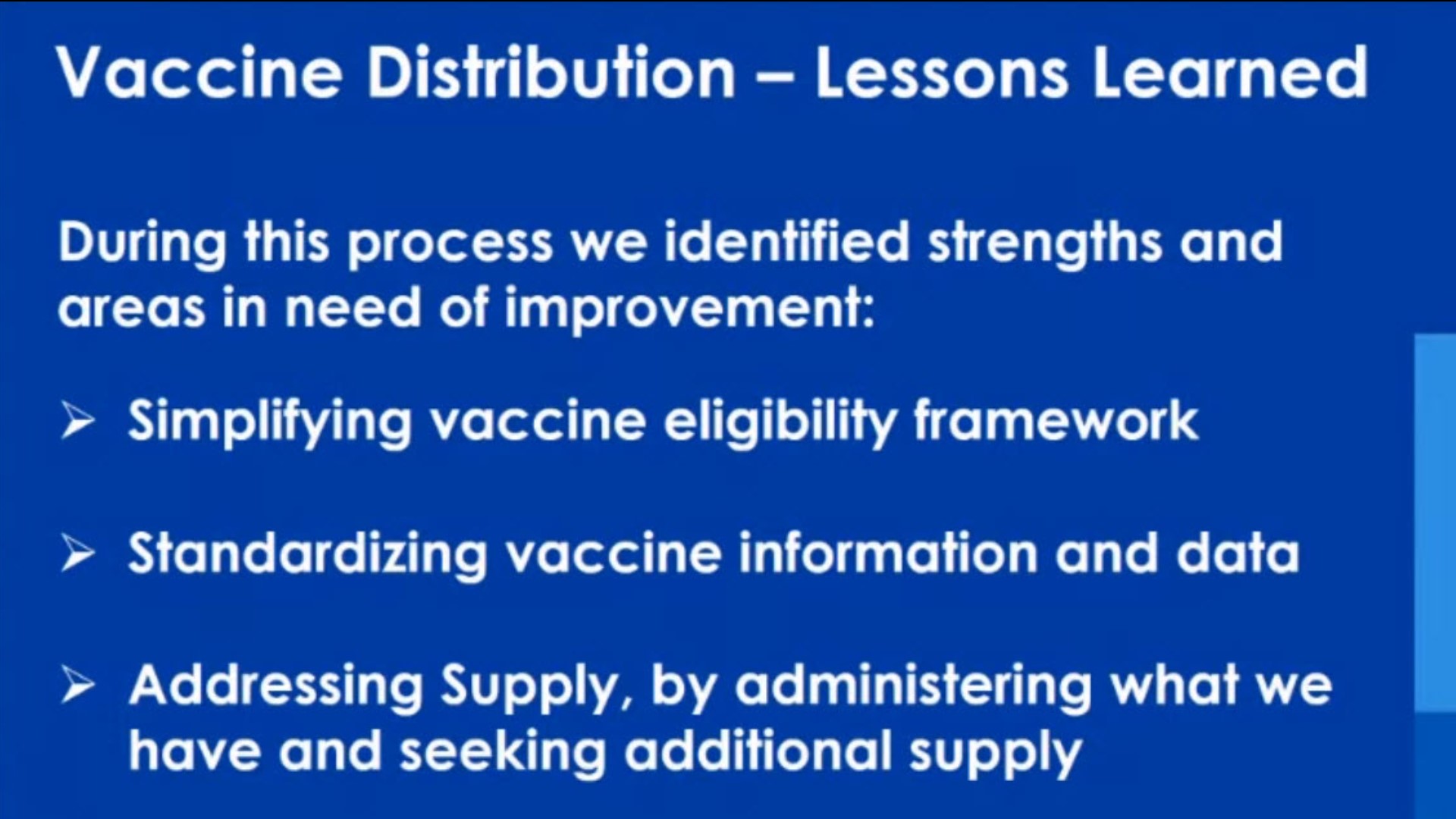SAN DIEGO — California will move to a new vaccine distribution plan based mostly on age for later tiers. The change could push back younger essential workers and move up older adults. The state is also changing how it allocates vaccines to counties and when they can add availability for younger residents.
How will the tiers work? Are they all going away?
By mid-February, there will be a new state standard. It will still prioritize people who work in healthcare, education, childcare, emergency services, food and agriculture. The state will also continue prioritizing seniors 65 and older.
Instead of vaccinating workers in other “essential” industries who were in Phase 1B-Tier 2 and later, the state will offer vaccines to older adults.
Why are the changes being made?
The state has decided to prioritize older Californians because they are more likely to suffer the worst effects of coronavirus. It also argues the new vaccination strategy is easier to understand and allows them to scale up and down based on supply.
“Our focus is to ensure that we have that balance between risk and exposure,” said Mark Ghaly, M.D., M.P.H., Secretary of California Health and Human Services. “That we protect those individuals with the vaccine as early as we can, especially with the supply challenges that we have.”
What does this mean for younger workers?
“Younger individuals who are in professions or in situations where they aren't nearly as exposed as some of the other high exposure industries will end up waiting a little longer,” said Ghaly.
This primarily affects workers younger than 50 who work in transportation/logistics; industrial, commercial, residential and sheltering facilities/services; and critical manufacturing.
How does this affect people with underlying health conditions or disabilities?
Previously this group was in Phase 1C. The state has only said the new system will be based on age although some modifications may occur.
“We certainly are listening to a lot of feedback, making what I would say are difficult decisions, but trying to make sure that they're clear and simple to follow,” said Ghaly. “Using an age-based framework helps us get there, but also recognizing that that targeted outreach, that allocation, formula and opportunity helps us reach other populations not just on age, but on exposure to ensure that those populations are taken care of.”
How will the new state strategy affect vaccine distribution?
Previously, the decision to change vaccine tiers was made at a county level. Starting in mid-February, all counties will move at the same time.
The state plans to move vaccines from counties that have met the current tier to those that haven’t. For example, if a rural county has vaccinated all its seniors then their doses may be moved to other counties that are behind instead of the rural county deciding to move into the next tier or phase.
“Our overarching approach to operations is we want to make sure that nothing slows down the administration of vaccine other than the pace in which vaccine arrives in the state and we're going to do that by balancing safety, speed and equity while scaling up to meet the level of vaccine needed in the state,” said Yolanda Richardson, Secretary of the Government Operations Agency, who was tapped to oversee vaccine operations and delivery.
How will I know when I qualify for a vaccine?
The state has set up the My Turn notification system. All Californians can register to get notifications when they qualify for the vaccine.
The state is also piloting the My Turn appointment system in San Diego and Los Angeles County. Eligible residents of these counties can use the system to find public vaccine sites and book appointments. Appointments at some privately run sites, such as those run by some healthcare providers or pharmacies, may not be available.
“We understand that vaccine supply is limited, but we also need to address that the supply we have now needs to get administered as quickly as possible. So, we're developing an approach that allows us to do just that safely and equitably and quickly, but also allows us to scale up when there's more supply available,” said Richardson. “We want to make sure that nothing slows down the administration of vaccine other than the pace in which vaccine arrives in the state. And we're going to do that by balancing safety, speed and equity.”


